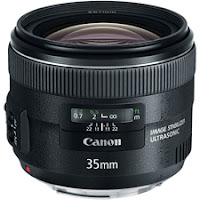If you want to get serious about macro photography and
capture true macro, i.e. 1:1, shots there are two essential pieces of equipment
you need to buy.
The first is a specific macro lens. You can capture close up
photos using reversing rings, close up filters and extension tubes however
these are a bit amateurish. It is possible to get okay (and sometimes good)
close up photos using this equipment, but you won’t get true macro shots and
you won’t get great macro shots either. You may have read posts, articles and
stories by photographers claiming you don’t need a macro lens to get proper
macro shots, but this simply isn’t true. Trust me, you need a macro lens to get decent macro photos.
The macro lens I use is the Canon 100mm f2.8L IS macro lens
(full review here) and it is a cracking lens. It wasn’t cheap, but it is worth
every penny.
Before I bought the Canon 100mm f2.8L IS macro lens I used
the Canon 100mm f2.8 macro lens and this was also a great
lens. Had I not needed image stabilisation (for insect photography) I would
still be using my 100mm f2.8 macro lens today. If you don’t need image
stabilization or the superior build quality of the L series macro lens this
version is going to be right up your street.
The second bit of essential kit you need for macro
photography is a specific macro flash. Lighting is crucial in macro photography,
and whilst it is nice to use ambient light only this is not possible most of
the time, and a macro flash will give the burst of light you need to get a good
exposure.
When I first started out in macro photography I used a
standard speed light and soon discovered it was far from ideal. If I used the
speed light on the camera when taking photos of very small subjects (bugs and
beetles for example) the lens cast a shadow over the subject that even the
speed light wouldn’t illuminate. When I took the flash off camera having to
hand hold the flash whilst taking photos of insects was cumbersome and I ended
up missing many shots. The other issue with standard speed lights is they are
too powerful for taking close up photos of small subjects, and even when the
power was dialled down to the lowest setting over exposure was a big problem.
The best way to add a much needed burst of light in macro
photography is to use a ring flash. The ring flash is attached to the end of
the lens so there is no way the lens casts a shadow over small subjects. The
ring flash is also low powered so you can get real close to the subject without
flash overexposure.
A ring flash may look a little awkward on the camera but
once you get used to it, which doesn’t take long, using the setup is a
pleasure.
The ring flash I use is the Yongnuo YN14EX (full review here):-
The Yongnuo YN14EX is based on the Canon MR14 and Sigma EF14
ring flashes. The build quality of the Yongnuo ring flash isn’t as good as the
Canon or Sigma ring flashes, but given the price of the Yongnuo this is to be
expected. Whilst the build quality may not be up to the same standard as the
Canon and Sigma ring flashes it isn’t really that bad. The Yongnuo is still a
well-constructed bit of kit and I have used the YN14EX for several years with
no problems.
The Yongnuo has all the features of the Canon and Sigma ring
flashes, everything works in the same way as the Canon and Sigma ring flashes
and it does exactly the same job as the Canon and Sigma ring flashes. In my
opinion there really is no point in paying a premium for the Canon and Sigma
ring flash when the cheaper Yongnuo YN14EX does exactly the same thing.
Another macro light I own is the Yongnuo YN24EX (full review here), which is a macro light based on the (much more expensive Canon MT24
macro light).
I used the Canon MT24 macro light during a macro photography
workshop a few years back and as much as I wanted one the price tag was just
too high, and there was no way I could justify spending so much money on a
macro light – I had to make do with my Yongnuo YN14 ring flash.
When Yongnuo announced the release of the YN24 I was keen to
take a look. I knew what Yongnuo products were like and I knew the quality
standard of Yongnuo equipment. When I saw the price of the Yongnuo YN24 I
instantly ordered one, and I have to say it was one of the best decisions I
have made.
The Yongnuo YN24 isn’t a bombproof as the Canon MT24, but it
has the same features and it does the same job, which is all I need it to do.
The Yongnuo YN24 is an excellent product, and whilst there are some negative reviews
about it on the internet I would advise taking these with a pinch of salt. Some
of the negative reviews are a bit harsh, and the people reviewing the Yongnuo
YN24 are doing a direct comparison to the Canon MT24 flash light, which is
almost eight times as much as the Yongnuo YN24.
All things considered the Yongnuo YN24 is an excellent macro
light and I can honestly say I wouldn’t be without mine.
Related reading
Below are some links to other macro photography related
articles, posts and tutorials you may find interesting/useful:-
- Insect photography tips
- Using a super zoom lens for macrophotography
- Best macro lens for Canon cameras
- Macro photography on the cheap
Photography ramblings video playlist that may be of interest



























